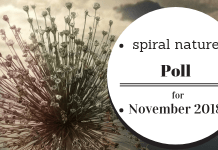 Near-Death Experiences, The Rest of the Story: What They Teach us About Living, Dying, and Our True Purpose, by P.M.H. Atwater
Near-Death Experiences, The Rest of the Story: What They Teach us About Living, Dying, and Our True Purpose, by P.M.H. Atwater
Hampton Roads, 9781571746511, 288pp., 2011
Phyllis Atwater is a well known researcher and author in the field of near death experiences, in fact she is one of the first researchers in the field and Near-Death Experiences, The Rest of the Story is her final book on the subject as she’s retiring. As someone with a few NDE in my past and an interest in the subject I was very excited for this book. I was worried that it would be a rehash, like many books on the subject tend to be, but I was not disappointed and in fact this book exceeded my expectations. This book contains “forty-three years of research involving nearly seven thousand adults and children”1 and while some of it is familiar, there is a lot of new material as Atwater is retiring she “finally say[s] things [she] never dared to say before.”2
So what is the “rest of the story” the title alludes to? It’s everything I’ve wanted to read about NDEs but never have. Most people are familiar with the story of the tunnel, the white light, and angels or Jesus or family members waiting for the newly deceased, but this story is actually relatively uncommon when you look at the numerical breakdown of experiences, though more common in adults than children3. In fact experiences of a living and loving darkness, rather than light, predominate the experiences of children, a detail I’ve not seen before by greatly comforting. Atwater clearly breaks down the different main types of experiences, and breaks them down further by age of the experiencers, showing there is a lot more diversity in the experiences. Not only that but when we look deeper into the diverse experiences they seem to indicate a lot more about the world and human nature than just the tunnel idea.
There is more to the “rest of the story” than just other types of NDE, there is also a darker side of phenomena, and I don’t mean the hell-like NDEs but that 21% of people who have near death experiences attempt suicide within fifteen years of the experience trying to return to what they lost4. She also discusses the IQs of children who have NDEs, maturity levels, shared NDE, medical oddities that pop up, and even takes the plunge that most researchers in their career wouldn’t touch, the psychic abilities and phenomena associated with NDEs. It might seem odd to some people, but a lot of “serious” NDE researchers shy from psi because it can get their work called into question, but as Atwater is at the end of her career and well-respected she brings it up.
As a data minded person I loved most of this book as Atwater was constantly offering up numbers, statistics, and citations to other studies. Though I was also disappointed when at two crucial points a fact was revealed and discussed that seemed unbelievable, and no source or citation was offered. The exception most definitely, but still a disappointment. For those who like a book with research, this has it, and clear indications on where to follow up if you want to know more.
The entire book is filled with in depth examinations of the experience of a near death experience, from a variety of different paths, as well as examinations of the lives of these people and what the near death experience has done to them, how they are changed. It is an excellent book to retire on, and if you only look to read one book on the phenomenon of near death experiences that I wholeheartedly recommend you pick up Near-Death Experiences, The Rest of the Story.








